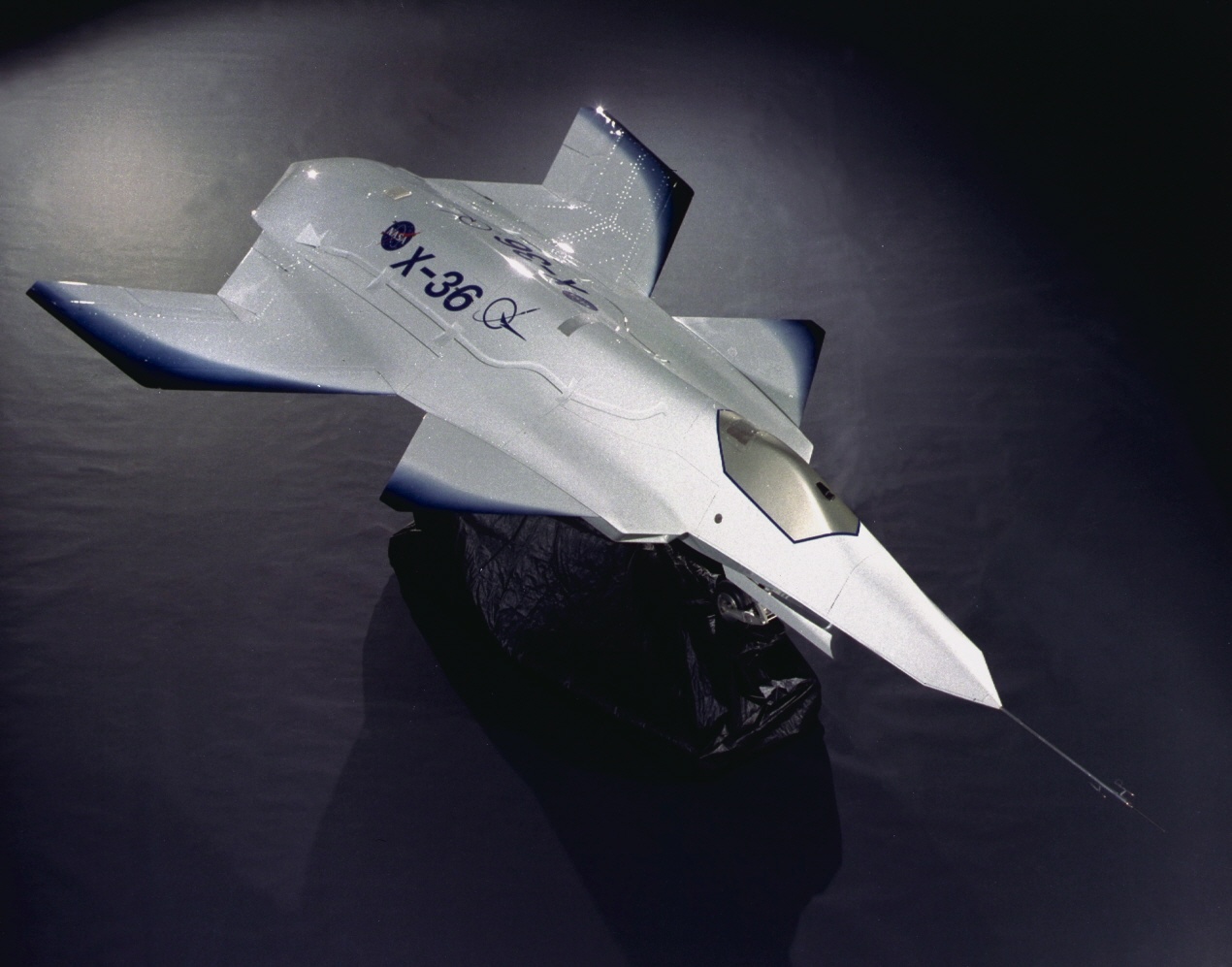BEMIL 사진 자료실
UAV (X-36)
1.
McDonnell Douglas and NASA embarked on a joint project in 1994 to develop a prototype fighter aircraft designed for stealth and agility. The result is a subscale tailless aircraft called the X-36. The 28 percent scale, remotely piloted X-36 has no vertical or horizontal tails, yet it is expected to be more maneuverable and agile than today's fighters. In addition, the tailless design reduces the weight, drag, and radar cross section typically associated with traditional fighter aircraft.
2. In a series of upcoming flight tests, the low-cost X-36 research vehicle will demonstrate the feasibility of using new flight control technologies in place of vertical and horizontal tails to improve the maneuverability and survivability of future fighter aircraft. During flight, the X-36 will use new split ailerons and a thrust-vectoring nozzle for directional control. The ailerons not only split to provide yaw (left and right) control, but also raise and lower asymmetrically to provide roll control.
3. Using a video camera in the nose of the vehicle, a pilot controls the flight of the X-36 from a virtual cockpit -- complete with head-up display (HUD) -- in a ground-based station. This pilot-in-the-loop approach eliminates the need for expensive and complex autonomous flight control systems.
4. Fully fueled, the X-36 prototype weighs 1,300 pounds. It is 19 feet long and measures 11 feet at its widest point. It is 3 feet high and is powered by a Williams Research F112 engine that provides about 700 pounds of thrust.
대표 이미지

BOEING-X-36.jpg

boeing-x-36-1.jpg

boeing-x-36-2.jpg

boeing-x-36-3.jpg









